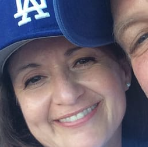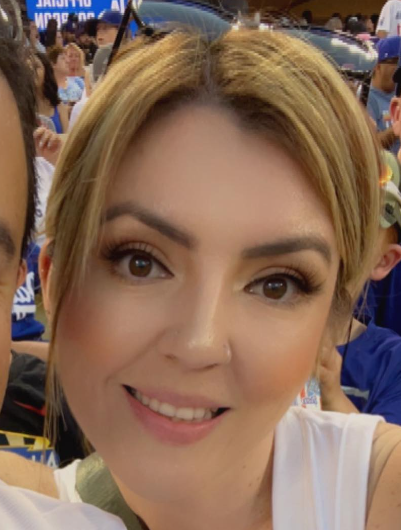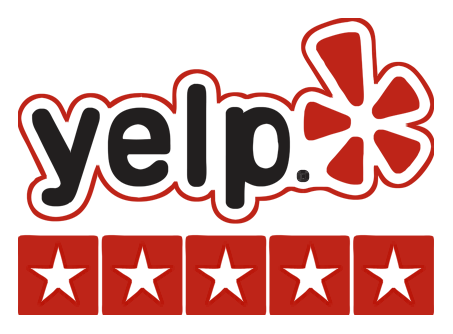Competitive Rates and Fees
Transparent Pricing, No Hidden Costs
Advisors who always put you first
Qualify
-
12 Months Personal or Business
Rates
-
Starting at 6.625%. 30 Yrs Fixed
Down
-
Fthb w/o Housing History. 70%
Credit
-
660 to 80% Ltv. 740 to 90%
Loan Amount
-
Min $150,000 - $3,500,000
Occupancy
-
Primary, 2nd & Investment
Are these today's current rate
- Rates are subject to change without notice. Please submit a loan estimate request for the the most accurate rates that can be locked in.
Why use a Bank Statement Program
This program is designed for borrowers who are self-employed and would benefit from alternative loan qualification methods. Bank statements (personal and/or business) may be used as an alternative to tax returns to document aself-employed borrower’s income.
What is a First Time Home Buyer
The Home Loan Source defines a First Time Home Buyer as a borrower who has no ownership interest (sole or joint) in a residential property during the three-year period preceding the date of the purchase of the subject property.
First Time Home Buyer is allowed on some programs with guideline restrictions. First Time Home Buyers Ineligible for DSCR program.
A First Time Home Buyer can meet the housing history requirement with a satisfactory (0x30) consecutive 12 month rent history sometime in the 3 years prior to loan application.
What is housing history requirement
- A First Time Home Buyer can meet the housing history requirement with a satisfactory (0x30) consecutive 12 month
rent history sometime in the 3 years prior to loan application.
How does the Underwriter document deposits?
Initial Deposit Review: Using an income worksheet the UW is to document the total deposits from the monthly statement. The UW will review the individual deposits on the statement and itemize deposits that are not allowable (unknown wires, transfers from other accounts, refunds, unusually large deposits). Deposits from other income sources, SSI, W2 earnings are to be backed out and documented with the appropriate documents. Gross rents from any REOs are to be backed out of the deposit totals.
From statement to statement the UW can recognize a deposit pattern of regular dollar amounts, frequency and source. From this pattern and the UW knowledge of business type, the threshold for unusual deposit amounts will be apparent. Additional documentation of unusual deposits will be required to be included as business revenue.
UW to research deposits/wires that the source is identified to insure the deposit is business revenue. The UW will be able to identify deposits that are from business financing sources and not to be included as revenue.
Deposits that are inconsistent in type, size or source are to be noted by UW for further review after several months have been completed. The UW can often determine a deposit as acceptable or not after multiple months of activity for deposits and debits are reviewed.
How does the Underwriter review debits to determine expense factor?
The UW is to review each statement debit activity for the purpose of supporting the business expense factor used to determine qualifying income. Subject to the information provided for each debit, the UW will be able to determine the accuracy of the expense factor.
Debits from the account are to be reviewed for consistency with the business type and expense factor applied or provided in the case of a CPA P&L. A business with a 40% expense factor per the P&L will not have 60% of the monthly deposits paid out to 3rd parties over a 12 or 24 months period. The UW will be able to support the expense factor provided or determine the accurate expenses of the business with the review of the debit activity and checks paid.
Debits that are known personal liabilities (as per credit report) are not viewed as business operating expenses. Undisclosed liabilities that occur regularly are to be researched to determine if additional documentation is required to categorize the expense as business or personal.
Debits that are paid to the same sources that a deposit has been received from must be backed out of the deposit totals.
Debits that are reversals or adjustments to a deposit item are to be backed out of the deposit total for that statement period.
How does the Underwriter review checks paid?
Review of Checks Paid: All bank statements will itemize checks paid during the statement period. Some statements will also include copies of each check.
Statements without copies of checks– With a list of the checks written during the statement period, the information an UW can capture is limited. The approach with checks written from a business account is to treat them as business expenses unless documented as otherwise by a copy of the canceled check.
Statements with copies of checks– With the copies of canceled checks the UW will have clarity as to whether the payment is an expense of the business. The payee name, memo line and the endorsement of the check will provide information that can assist the UWs review and assessment of the business expenses.
Rates
Pricing Engine
Matrix
Guidelines
Bank Statement Details
- 12 or 24 months Bank Statements. This program is designed for borrowers who are self-employed and would benefit from alternative loan qualification methods. Bank statements (personal and/or business) may be used as an alternative to tax returns to document a
self-employed borrower’s income.
At least one of the borrowers must be self-employed for at least 2 years (25% or greater ownership) to qualify for this program.
No 4506-C/tax transcripts/Tax Returns (4506-C required for salaried co-borrowers)
Excessive NSFs on the bank statements may cause the loan to be ineligible.
Borrower must document two years current continuous self-employment with business license or statement from corporate accountant/CPA confirming the same.
Other documentation from third parties may be acceptable on a case by case basis (e.g., letter from an attorney).
Acceptable business license must be verified by third party (e.g., government entity, borrower’s business attorney). Borrowers whose self-employment cannot be independently verified are not eligible.
In instances where a license is not required (e.g., choreographer), a letter from a CPA confirming employment may be accepted in lieu of a license.
How does the Underwriter document deposits?
Initial Deposit Review: Using an income worksheet the UW is to document the total deposits from the monthly statement. The UW will review the individual deposits on the statement and itemize deposits that are not allowable (unknown wires, transfers from other accounts, refunds, unusually large deposits). Deposits from other income sources, SSI, W2 earnings are to be backed out and documented with the appropriate documents. Gross rents from any REOs are to be backed out of the deposit totals.
From statement to statement the UW can recognize a deposit pattern of regular dollar amounts, frequency and source. From this pattern and the UW knowledge of business type, the threshold for unusual deposit amounts will be apparent. Additional documentation of unusual deposits will be required to be included as business revenue.
UW to research deposits/wires that the source is identified to insure the deposit is business revenue. The UW will be able to identify deposits that are from business financing sources and not to be included as revenue.
Deposits that are inconsistent in type, size or source are to be noted by UW for further review after several months have been completed. The UW can often determine a deposit as acceptable or not after multiple months of activity for deposits and debits are reviewed.
How does the Underwriter review debits to determine expense factor?
The UW is to review each statement debit activity for the purpose of supporting the business expense factor used to determine qualifying income. Subject to the information provided for each debit, the UW will be able to determine the accuracy of the expense factor.
Debits from the account are to be reviewed for consistency with the business type and expense factor applied or provided in the case of a CPA P&L. A business with a 40% expense factor per the P&L will not have 60% of the monthly deposits paid out to 3rd parties over a 12 or 24 months period. The UW will be able to support the expense factor provided or determine the accurate expenses of the business with the review of the debit activity and checks paid.
Debits that are known personal liabilities (as per credit report) are not viewed as business operating expenses. Undisclosed liabilities that occur regularly are to be researched to determine if additional documentation is required to categorize the expense as business or personal.
Debits that are paid to the same sources that a deposit has been received from must be backed out of the deposit totals.
Debits that are reversals or adjustments to a deposit item are to be backed out of the deposit total for that statement period.
How does the Underwriter review checks paid?
The UW is to review each statement debit activity for the purpose of supporting the business expense factor used to determine qualifying income. Subject to the information provided for each debit, the UW will be able to determine the accuracy of the expense factor.
Debits from the account are to be reviewed for consistency with the business type and expense factor applied or provided in the case of a CPA P&L. A business with a 40% expense factor per the P&L will not have 60% of the monthly deposits paid out to 3rd parties over a 12 or 24 months period. The UW will be able to support the expense factor provided or determine the accurate expenses of the business with the review of the debit activity and checks paid.
Debits that are known personal liabilities (as per credit report) are not viewed as business operating expenses. Undisclosed liabilities that occur regularly are to be researched to determine if additional documentation is required to categorize the expense as business or personal.
Debits that are paid to the same sources that a deposit has been received from must be backed out of the deposit totals.
Debits that are reversals or adjustments to a deposit item are to be backed out of the deposit total for that statement period.
1099 Contractor
A borrower who is a “1099 contractor” may be considered self-employed for this program with confirmation from a CPA that the borrower is a 1099 contractor and files Schedule C or Schedule E with the IRS (personal tax returns).
Service & Tip Industry
Due to the cash nature of the service and tip industry, those borrowers may participate the bank statement program. Full documentation is required for employment. Base salary is verified with pay stubs and W-2s. Qualified tips are averaged over time. Utilize the bank statement analysis to determine tip income.
Borrowers who obtain their income primarily in the form of service fees or tips, are not required to have a business license.
Non-taxable Income (if included in deposits)
Non-taxable income may be grossed up by 15% for qualifying (e.g., Social Security)
Supporting documentation is required to validate deposits.
Retirement and Other Income (if included in deposits)
Retirement income and other fixed documentable income is allowed for qualifying income for both a self-employed borrower and for any non-self-employed or retired co-borrower.
Non-taxable income may be “grossed up” by 15%.
Other non-retirement income from the self-employed borrower (e.g., W-2 wage income) may be used. This other income must be fully documented (i.e., may not use the bank statement documentation).
Supporting documentation is required to validate deposits.
Rental Income (if included in deposits)
Rental income deposited into business bank statement should be back out and can not be used as business income.
Rental income used for qualification must be documented with lease(s). Use 75% of lease rent amount minus PITIA for net rental income.
An expired lease agreement that has verbiage that states the lease agreement becomes a month-to-month lease once the initial lease/rental term expires is allowed.
Employed Borrowers (if co-borrower)
Most recent paystub including year-to-date earnings (covering minimum of 30 days) and two years W-2s; or,
Traditional Written Verification of Employment with 30 days of paystubs and 2 years W-2s.
Must have 2 years continuous employment in the same line of work.
Gaps of 90 days or less may be accommodated with adequate explanation.
W-2 only and/or 1099 transcripts from the IRS are required for the wage earning or retirement income co-
borrower.
Personal & Business Bank Statements Combined
If personal and business bank activity are combined in one bank account, borrower is to provide the most recent 24 or 12 months consecutive bank statements from the same account.
The bank statements are analyzed per 8.7.5 Alt-Doc : Business Bank Statement Income Analysis to determine qualifying income.
Standard expense factor applies; 50% expense factor.
If the type of business operates more efficiently or typically has a materially different expense factor (higher or lower than standard expense factor), then the expense factor per either a CPA/CTEC/EA letter or P&L may be applied.
The minimum expense factor with CPA letter or P&L is 20%.
When a CPA or tax preparer produced statement is provided, apply the stated expense factor to calculate the qualifying income ( subject to the minimum expense factors). Provide either of the following:
A CPA/CTEC/EA produced written statement/letter specifying the actual expense ratio of the business (including cost of goods sold and all other business expenses) based on the most recent year’s filed tax returns; or,
A CPA/CTEC/EA produced Profit and Loss (P&L) statement that has been reviewed by the CPA/CTEC/EA, the CPA/CTEC/EA states they have reviewed the P&L in writing, and the P&L and accompanying statement do not have unacceptable disclaimer or exculpatory language regarding its preparation.
The expense factor per the P&L or CPA/CTEC/EA produced statement must be reasonable. The annual deposits on the bank statements must be at least 75% of the gross receipts per the P&L.
When the borrower is an inter vivos trust, personal bank statements in the name of the trust are allowed for qualification
Personal & Business Bank Statements Separated - Personal Bank Statements Only
When only personal bank statements are used for qualifying.
The borrower is to provide the most recent 12 or 24 months consecutive personal bank statements and two (2) months business bank statements (to support the borrower does maintain separate accounts, and to show business cash flows in order to utilize 100% of business-related deposits in personal account).
The deposits are analyzed and averaged to determine monthly income.
No expense factor
Deposits to a personal account from sources other than self-employment is not to be included.
When the borrower is an inter vivos trust, personal bank statements in the name of the trust are allowed for qualification.
Business Bank Statements Only
If only using business bank statements, borrower is to provide the most recent 24 or 12 months consecutive business bank statements.
The bank statements are analyzed per Section 8.7.5 to determine monthly income.
Standard expense factor applies; 50% expense factor.
If the type of business operates more efficiently or typically has a materially different expense factor (higher or lower than 50%), then the expense factor per either a CPA/CTEC/EA letter or P&L may be applied.
The minimum expense factor with CPA letter or P&L is 20%.
When a CPA or tax preparer produced statement is provided, apply the stated expense factor to
calculate the qualifying income. Provide either of the following:
A CPA/CTEC/EA produced written statement/letter specifying the actual expense ratio of thebusiness (including cost of goods sold and all other business expenses) based on the most recent year’s filed tax returns; or,
A CPA/CTEC/EA produced Profit and Loss (P&L) statement that has been reviewed by theCPA/CTEC/EA, the CPA/CTEC/EA states they have reviewed the P&L in writing, and the P&L and accompanying statement do not have unacceptable disclaimer or exculpatory language regarding its preparation.
The expense factor per the P&L or CPA/CTEC/EA produced statement must be reasonable. The annual deposits on the bank statements must be at least 75% of the gross receipts per the P&L.
The bank statements should show a trend of ending balances that are stable or increasing over the 24 or 12 months period.
Large deposits inconsistent with history must be documented as business income.
Net deposits must not reflect any other income sources already taken into consideration (i.e. deduct SS payments, W-2 wage earnings, etc., that have already been used for income calculation).
Business Bank Statement Income Analysis
Using bank statements to document qualifying income requires the underwriter to review each set of statements differently according to the type of business and the detail of information contained in the statements.
Unlike a paystub, W2 or tax return, bank statements do not contain the same details from one bank to another. All bank statements will contain the same general information such as deposits, debits, balances etc. The information that will vary widely will be the details shown for each debit or deposit source. Some accounts will contain copies of checks written while most will not.
The underwriter will have to understand and analyze the following to determine a supportable qualifying income:
Research the business type – The UW must have an understanding of the type of business the statements represent and the expected deposits and expenses for the business both in dollar amounts and frequency. The UW must review the address(es) of the business to ensure the location could support the type and size of business reported if applicable.
- The UW will have to categorize the type of bank statements being reviewed as either combined personal and business or business only. Statements cannot be categorized based solely on the account “name”. Theactivity in the details are to be used to determine the account type.
- The UW will have to review the individual electronic and check debit activity to determine that the expense ratio being applied is accurate and supported by the statements.
- When the bank statement debit activity reflects expenses higher than the standard expense ratios (8.7.4 Alt-Doc Option 3: Documentation and Expense Ratios) the UW is to analyze the monthly debits to determine the representative expenses for the business.
- The UW will have to recognize when the bank statements provided are insufficient to determine a supportable qualifying income. Often additional statements or “other” accounts may be required to provide a complete income picture.
Personal and business bank statements combined
These are accounts that are typically used by small business owners for both business and personal use. The account activity will show deposits from business activity as well as all other sources of income ( wages from spouse,second job,SSI,rents, etc.).
Business Bank Statement Only
These are accounts that are used solely for business revenue and expenses. The account will typically show revenue and expense activity for only the business. Occasionally the account could show deposits or liability payments that are not business related.
An acceptable business account will reflect business revenue deposits and business expense payments. An account showing deposits and only transfers to other accounts is not sufficient to analyze the business expenses and determine qualifying income.
Trust accounts or Client Trust accounts are not acceptable documentation for determining qualifying income. The Operating account for the business must be used to accurately analyze business expenses.



















